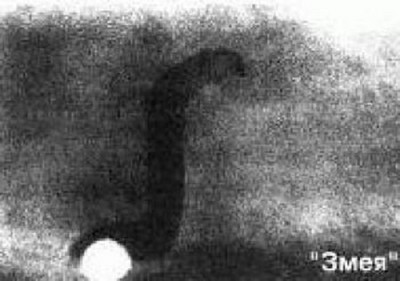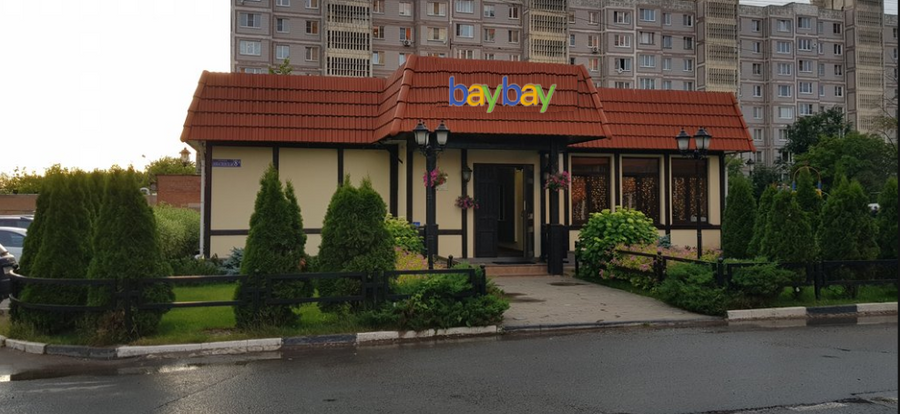Synthesis of high molecular dreams

The virtual world has always existed, initially in the fantasy of man. With the advent of writing, he received a fixation already in physical reality. The next stage was the emergence of cinema, and the latest milestone, which we have the pleasure of watching at the present time, is computer reality.
Any of us can plunge into computer virtual reality if we have the necessary equipment. It is also not difficult (not yet) to get out of the computer virtual reality back into the native physical reality. However, to date, it has not been possible to steadily transfer objects of the virtual world into the material world, although such attempts have been made repeatedly.
In 1880, the French artist Pierre Bouchet got drunk to hell, which he found in the morning, captured on photographic photographs taken the previous day.
')
In 1885, the Dutch Bine and Fere pressed on the patient's eyes and found that the number of hallucinatory images he had doubled.
In 1903, the Swiss psychologist Gustav Storring presented the patient with binoculars. Hallucinatory images of the patient immediately approached.
In 1910, Japanese professor Tomokichi Fukarai filmed hieroglyphs imagined by a medium on a film.
In 1935, British scientists Adrian and Metius captured human thought on a movie camera.
In the 1960s the American Julu Eisenbad found a patient who could expose a polaroid film to hallucinatory images on request.
In the 1980s Russian psychiatrist GP Krokhalev mastered the technique of photographing the hallucinations of his patients, which finally proved the possibility of synthesizing objects of the virtual world in the physical world. However, the synthesis technique was absent at that time.

Photo of snake hallucination. From the family archive of G.P. Krokhaleva
Research has been crowned with success nearly 30 years later.
In 2012, in the laboratory of synthetic virtual at the Institute of Chemical Transparency. Academician Butlegerov was first obtained 15 molecules of virtual ammonia. The work was carried out on the experimental instrument “Sonya” - the world's first virtual reality synthesizer (SVR), designed here in Russia.
Launching the device required a long six years of painstaking work, but time was not wasted. At present, the SVR “Sonya” of the fourth modification allows stably synthesizing dreams, turning them into objects of physical reality. With a dream resolution of 1920 x 1080 or more pixels, the synthesis is performed qualitatively, with a lower resolution, there is some deterioration in the resulting sample.
However, the main problem of using Sony is not at all in the design features of the device, but in the dreams themselves. Without dreams, the device is useless: it does not know how to materialize the required objects at the request of the operator. Objects are taken from the patient's dreams (according to a special terminology, the dreamer) and only then, with the help of Sony, are transferred from virtual reality to physical. The object must exist in the virtual, otherwise it simply has nowhere to take. However, people do not control their dreams, this is the problem.
The clichiness leads to the fact that the model sets are synthesized mainly: for male dreamers, these are mostly naked women, for women - flowers or an assortment of fashion boutiques. Such objects are not of great government interest. It is necessary to look for people who see in a dream that which represents true value: rare-earth metals, plutonium or diamonds - but there are few such unicoms.
And even if a person is found with possession of valuable dreams, even if he voluntarily agreed to become a dreamer, the only one will not be able to be used indefinitely. The law of conservation of matter has not been canceled: if an object arises in one reality, then it disappears from another reality. With each new synthesized object, the dream mine is exhausted - until the dreamer stops dreaming at all.
This explains why in five years of using Sony from virtual reality, 1039 women, 5 men, 11 bicycle tires, 102 big bags, 485 handbags, 739 flower bouquets and only 230 carats of diamonds and 2 g of rare earth metals were synthesized.

Diamonds mined from virtual reality
Research continued until 2017, when the funding for the laboratory was frozen. The loss of interest on the part of the military industrial complex was explained by the fact that in five years of using the SVR, despite the efforts made, it was never possible to synthesize a new type of weapon of mass destruction.
Forced travel of the military to pass the survey as dreamers did not give a positive result. Some ordinary soldiers — they, in the opinion of their commanders, had too much imagination — did not see anything in their dreams but soup sets. Attracting to the work of command and engineering staff gave a little more: dreams were somewhat more diverse than the rank and file, but no one saw new types of weapons of mass destruction in a dream. Accordingly, such weapons could not be synthesized.
But every cloud has a silver lining - the lack of funding has accelerated the entry of Sony into the free market. The developers of the synthetic virtual laboratory have registered LLC and the trademark “Baybai”. A license for the extraction of minerals from the virtual.
Currently, we have available 8 copies of the SVR “Sonya-4” apparatus of increased productivity. The devices are made on the basis of tomographs to which special equipment is connected.

Virtual reality synthesizer "Sonya-4" with the company logo "Baybaj"
In connection with entering the market, principles have been developed for providing services for synthesizing virtual reality to the public. The main one is the ban on the synthesis of organic matter. The dreamer cannot control what he is dreaming of, therefore, all the devices have lockers with the appropriate settings.
Branches of Baybay LLC are open in Moscow, St. Petersburg, Ryazan, Novosibirsk, Tomsk, Krasnodar, Astrakhan and Vladivostok. They work around the clock, the unit is offered for rent for 8 hours.

Service "Baybay" in Tomsk
To enter into a lease agreement, you must present a passport and a certificate from a drug treatment clinic. In accordance with the contract, the dreamer pays a one-time fee of 3,000 rubles.
Having finished with the formalities, you lie down in the apparatus and, under the supervision of the technician on duty, you fall asleep. Natural sleep is desirable: when using a sleeping pill, the synthesized objects are obtained as cloudy or with foreign patches. If you cannot fall asleep, the one-time fee is not refundable.
Having woken up, together with the technician you open the sealed container in which the products of your dreams are synthesized. If the container is empty, then you are out of luck:
• either you dreamed nothing
• or dreamed of such that there was no way to synthesize.
If something is in the container, then in accordance with the contract, 30% of the synthesized objects belong to the dreamer, and the remaining 70% belongs to Baybai LLC, as a bonus for the equipment provided. When the number of objects is not divided in the named proportion, the objects are considered to belong to the parties under the terms of joint ownership.
In cases where the synthesized object is of no value, it is transferred to the willing side for free, and if both sides fail, it is disposed of. This happens when customers dream about used furniture, canceled bank cards or sanitary napkins.
But something else happens: the synthesized object turns out to be very, very valuable. Existing practice shows that for the most part three types of valuable objects are synthesized in the SVR:
• precious metals,
• gems,
• computer gadgets.
The last paragraph explains the publication of this material in Habré: those of the readers who sleep and see the latest models of gadgets in a dream are our customers.
Dear IT pros, we are happy to synthesize the objects of your desires from virtual reality! The high level of technical education in our country allows us to hope for a decent result.
Dreams are the largest resource base in the world. The day is near when SVR will become as familiar as a gadget, like an iPhone or a 3D printer. Dreamers no longer have to fall asleep in someone else's office: miniature home devices will appear, the settings of which will be regulated by the user. What Stanislav Lem dreamed about in Solaris will come true: people will be able to synthesize any of their dreams without restrictions.
Source: https://habr.com/ru/post/446060/
All Articles